|

HOME |
ABOUT | INDEX |
NEWS |
FACEBOOK |
CONTACT
KINKY
Bondage |
Dominance | Submission | Masochism | Roleplay
 
Drag|Cross Dressing
Bear Community
Furries|Cosplay
Ballroom Culture
Polyamory
Skirt Club
Down Low
Nudity|Nudism

Kink Lifestyle
The Kink
(or Kinky) Lifestyle, often referred to as BDSM,
represents a variety of erotic practices involving
dominance and submission, role-playing, restraint, and
other interpersonal dynamics. BDSM practitioners
generally feel free to engage in erotic improvisation
and to act out sexual fantasies. Given the wide range of
practices, some of which may be engaged in by people who
don't consider themselves BDSM practitioners, inclusion
in the BDSM community and/or subculture is usually
dependent on self-identification and shared experience.
Interest in BDSM can range from one-time experimentation
to an active lifestyle. It is sometimes referred to as
kink sexual identity.
The term BDSM derives from combining the term B&D
(bondage and discipline) with S&M (sadomasochism or
sadism and masochism), or as a compound initialism from
B&D, D&S (dominance and submission), and S&M. Regardless
of its origin, BDSM is used as a catch-all phrase to
include a wide range of activities, forms of
interpersonal relationships, and distinct subcultures.




Revealing My Kinks
The Uncomfortable Language of Kink
Kink Through the Ages
How To Start Dom/Sub
Relationships, According To Experts
What is BDSM? Your Queer
Guide to Kink, Domination, Bondage, and
More
Naughty Words: BDSM
Quotes to Get You Going
What We Can Learn About Ourselves From BDSM
Guide to Introducing Bondage Into Your Bedroom
Kinky Terms Every Queer Man Needs To
Know
Kinksters Who Found Their
Kinks
Consensual Kink 101:
Difference Between BDSM and Abuse
Huffington Post: Kink and Consent
Learning the Ropes in BDSM: Whips, Chains, Pleasure,
Pain
Kinky Bondage Toys
Types of Rolepay Every Gay Couple Needs
to Try at Least Once
BDSM is
typically included under the sexual minorities umbrella
to include individuals with alternative sexual
expression. Researchers estimate that 5-10 percent of
the US population engages in BDSM activities for sexual
pleasure on at least an occasional basis. The BDSM
community is made up of a good mix of heterosexual and
homosexual practitioners. Here is a breakdown on the
sexual orientation of BDSM people:
--Heterosexual 41%
--Bisexual 35%
--Gay/Lesbian 22%
--Other 7%
BDSM communities generally welcome anyone with a
non-normative streak who likes to engage in kinky
activities and exotic forms of sex play (usually
referred to as fetishism) that might include such acts
as spanking, whipping, pinching, flogging, binding, and
more. Most activity centers on dominance and submission.
Sometimes you will hear activities good-naturedly
described as disciplining, punishing, or chastising. Incidents are mild or staged activities that involve no
real pain or violence. There is never an intent to
exploit, demean, abuse, or harm a participant.
The BDSM
community includes a variety of subcultures, including
individuals who engage with leather, rubber, and latex.
Others might engage with animal costumes (furries,
ponies).
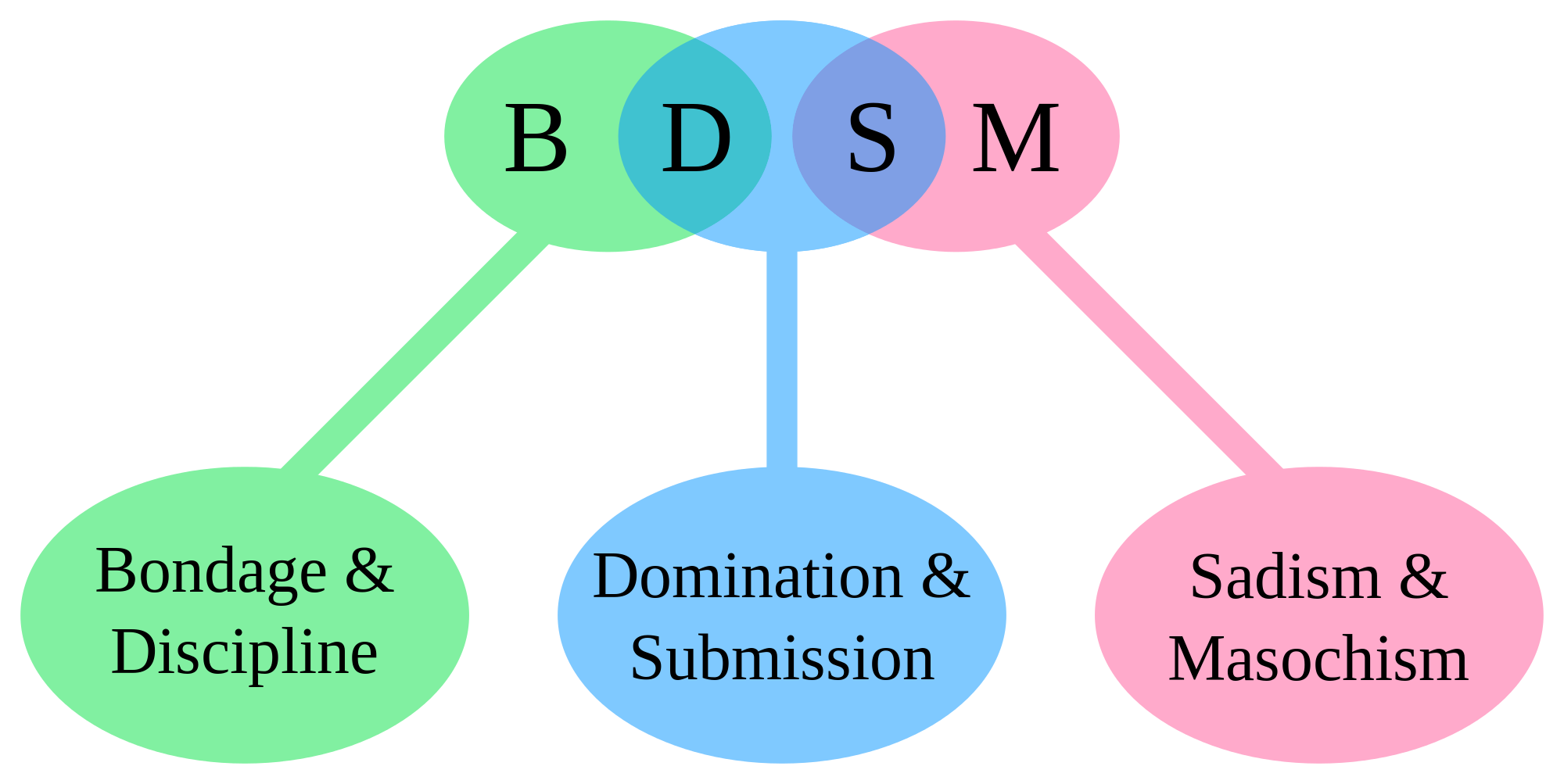
Handle It by Colton Ford
Video Chat: Common BDSM Terms
Consensual Kink 101: Difference Between
BDSM and Abuse
National Coalition
of Sexual Freedom
Sexplanations: Bondage 101
Submissive: Yes, No, and Maybe List
BDSM For Beginners: What
You Need To Know
Types of Rolepay Every
Gay Couple Needs to Try at Least Once
Sex Talk Realness: BDSM
Video Chat: Fetish and Kink
Kinky Terms Every Queer Man Needs To Know
Tabook: Cute Bondage Cartoon
Do's and Dont's of Kinky Sex
Aftercare: BDSM Practice We Should Use
For Vanilla Sex Too
Video Advice: BDSM Play and Safety Tips
Info: Cosplay/Furries
What is the Pup Play Queer Subculture?
BDSM
Activity: Whips and Chains
Since the popularity of the book, Fifty Shades of
Grey (by E.L. James, 2011), there has been an
increase in the number of people who are curious about
BDSM. This phenomenon has given rise to newcomers who
might not be aware of the cultural norms and protocols
that have been established in the BDSM community.
BDSM activities are between consenting adults and might
include such elements as tickling, teasing, spanking,
paddling, hair pulling, pinching, bondage, biting,
scratching, torture, punishment, begging, flogging,
whipping, slapping, hand cuffs, ropes, chains, wax
dripping, crossdressing, leather clothes, rubber or
latex clothes, hoods and masks, collaring, and
intricate role play. These activities, usually applied
mildly and lightheartedly, are intended for fun and
sexual exhilaration.
Sometimes
these activities are carried out in specialized venues
or dedicated kink zones called "dungeons." They are
generally equipped with assorted torture apparatus,
swings, shackles, stirrups, harnesses, yokes, racks,
cages, and other restraining devices to facilitate a
precisely calibrated, ritualized, or theatrical event.




Kink Through the Ages
Do's and Dont's of Kinky Sex
What We Can Learn About Ourselves From BDSM
Guide to Introducing Bondage Into Your Bedroom
Dominant Guide
Sexplanations: Bondage 101
What is BDSM? Your Queer Guide to Kink,
Domination, Bondage, and More
How To Start Dom/Sub Relationships,
According To Experts
Biggest Fetish Street Fair in Europe
Brat: Flirty, Feisty, and Just Begging to be Tamed
Kinksters Who Found Their Kinks
Alice Little: Flogging 101
BDSM: Part of Radical Queer History
Types of Rolepay Every Gay Couple Needs
to Try at Least Once
The best safe word you can use is "Meatloaf."
It means "I would do anything for love, but I won't do
that."
BDSM
activity often centers on dominant and submissive play
(master/slave, top/bottom, boss/secretary,
teacher/student, owner/pet, handler/pup, bears/cubs). Dominant
practitioners might be called Daddy Doms or Mommy Doms.
Submissive practitioners might be called Babygirls or
Leatherboys. Sometimes BDSM involves regressive
activities in which a person acts like a baby and seeks
to be mothered (Age Play, Infantilism).
Sometimes BDSM
involves role play or costume play (Cosplay), in which
participants dress up like specific characters.
Sometimes BDSM involves dressing up and acting like
animals (Pet Play, Puppy Play, Cat Play, Pony Play) and as manifest in
the Furries Community and Furry Fandom subculture.
BDSM
participants in a scene are called "play partners."
A dominant play partner is called a "dom." A
submissive play partner is called a "sub." A
"brat" is a submissive who loves to playfully push
buttons and ‘break’ rules to deliberately provoke
attention from their dominant.
The BDSM community insists that activities should always
be safe, sane, and consensual. BDSM activities almost
always involve planned or structured experiences. They
can be staged or scripted scenes (sessions) or role
plays. Activities are said to be conducted in a
controlled environment. Oftentimes the activities are
negotiated and agreed upon in advance and committed to a
formal contract.

Learning the Ropes in BDSM: Whips, Chains, Pleasure,
Pain
Lifestyle Education & Community
National Coalition
of Sexual Freedom
Video Advice: BDSM Play and Safety Tips
Advocate: Photos of Kink
and Leather on the Streets of LA
DotGay Dictionary: What is Kink?
BDSM and Aftercare: How to Support the Tops and Doms in
Your Life
Kinky Terms Every Queer Man Needs To Know
Sex Talk Realness: BDSM
Info: Cosplay/Furries
What is the Pup Play Queer Subculture?
BDSM
practitioners derive a sense of exhilaration or euphoria
from kink activities. They would say that whips and
chains turn them on. The term "vincilagnia" describes
sexual arousal that results from bondage or similar
activities.
Sometimes
sessions might involve high-risk or "edgeplay"
activities. Typically, a "safe word" is utilized ("red"
is a popular word) as a signal to give participants a
chance to slow down or stop at any time during the
proceedings.
The BDSM umbrella also includes couples who engage in
swinging and polyamory.
BDSM clothing might utilize such fabrics as leather,
rubber, or latex.
The strong fashion influence of BDSM is evident in such
groups as motorcycle gangs, heavy metal, glam rock, goth, and punk.
The BDSM community mandates that activity should never
involve children. It should never cause permanent harm
or injury. It should never cross over into exploitation,
abuse, rape, incest, domestic violence, or any criminal
acts.
How Kinksters Found Their Kinks
We Can't Get Enough Leather Dads: Folsom
Europe Photos
Portland's Kink Fest
What We Can Learn About Ourselves From BDSM
Guide to Introducing Bondage Into Your Bedroom
Sam Brinton on Biden's Staff: Non-Binary Pup Handler
Huffington Post: Kink and Consent
US News: What's Wrong with 50 Shades of
Grey?
Jessica and Stevie: Guessing Kinky Terms
BDSM: Part of Radical Queer History
National Coalition
of Sexual Freedom
Photo Shoot: Leather Dads on Parade
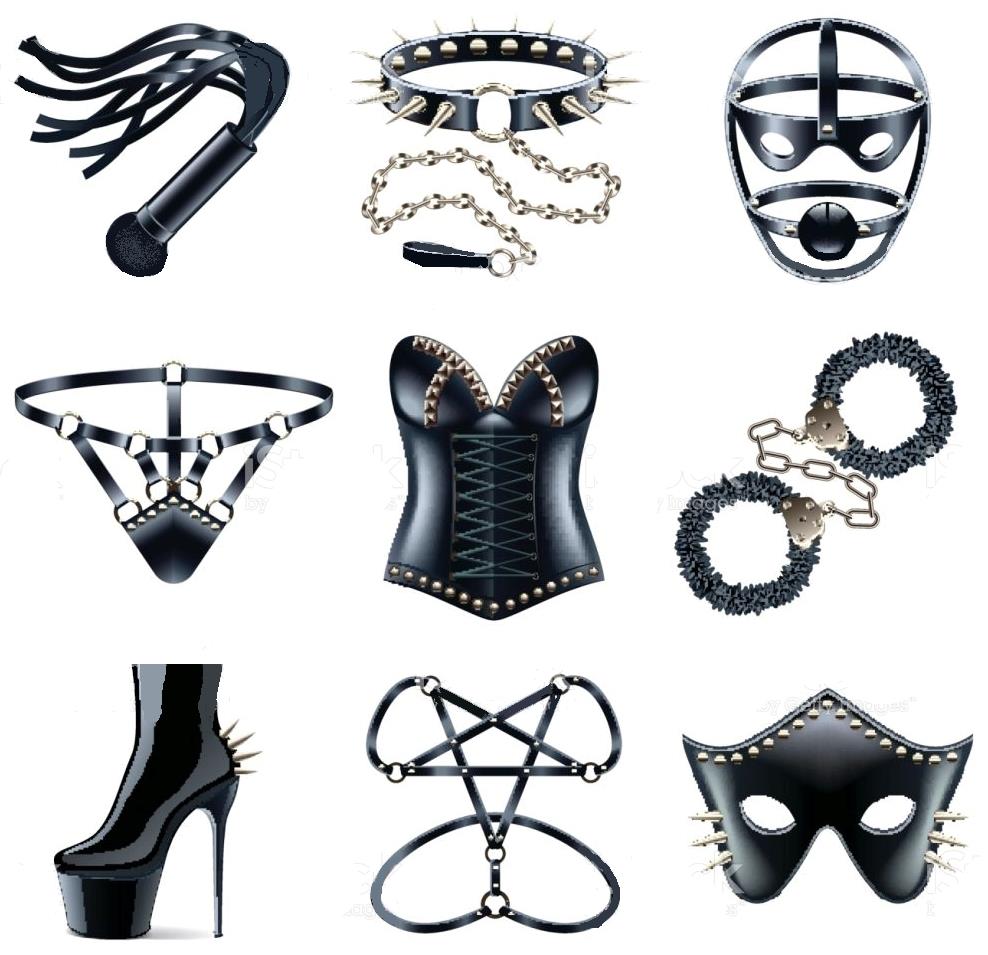
BDSM
Principles
SAFE | SANE | CONSENSUAL
In the BDSM community, safe, sane, and consensual (SSC)
are the three key words that represent the common
principles guiding relationships and activities. BDSM
activities should be:
Safe - Being responsible. Taking care of each other.
Being knowledgeable about safety concerns. Attempts
should be made to identify and prevent risks to health.
Don't be reckless. Minimizing dangers. Protecting
yourself and your partner from STDs and other hazards.
Sane - Activities should be undertaken in a sane and
sensible frame of mind. Establishing trust. Using good
judgment. Activities should be reserved for mentally and
emotionally healthy individuals. Knowing the difference
between fantasy and reality.
Consensual - All activities should involve the full
consent of all parties involved. Respecting limits and
honoring agreements. Observing rules and protocols. No
pressuring.
Revealing My Kinks
Differences Between Kinks and Fetishes
BDSM and Better Mental Health
Types of Rolepay Every Gay Couple Needs
to Try at Least Once
Handle It by Colton Ford
Kink Through the Ages
Video Tips: Types of BDSM Play for Beginners
25 Facts About BDSM That You Won't Learn From 50 Shades
of Gray
Submissive: Yes, No, and Maybe List
Kinky Bondage Toys
Jessica and Stevie: Guessing Kinky Terms
Consensual Kink 101: Difference Between
BDSM and Abuse
Three Couples Try Bondage for the First Time
Video Chat: Meaning and Types of BDSM Collars
Kinksters Who Found Their Kinks
Tabook: Cute Bondage Cartoon


RACK and PRICK
Two
acronyms used by the BDSM community are RACK and
PRICK.
RACK -
Risk-Aware Consensual Kink. Risk-Aware, simply stated,
means that you are “aware of the risk.” You should be
able to name said risks and know how to prevent harm.
Consensual means that everyone is on board with what
you’re about to do or what you’re currently doing.
PRICK - Personal Responsibility, Informed, Consensual
Kink. Personal Responsibility means that all kinksters
should take personal responsibility for their actions.
Informed means (or implies) that you understand what is
about to happen (risks and all). Consensual means that
all participants have granted their permission.


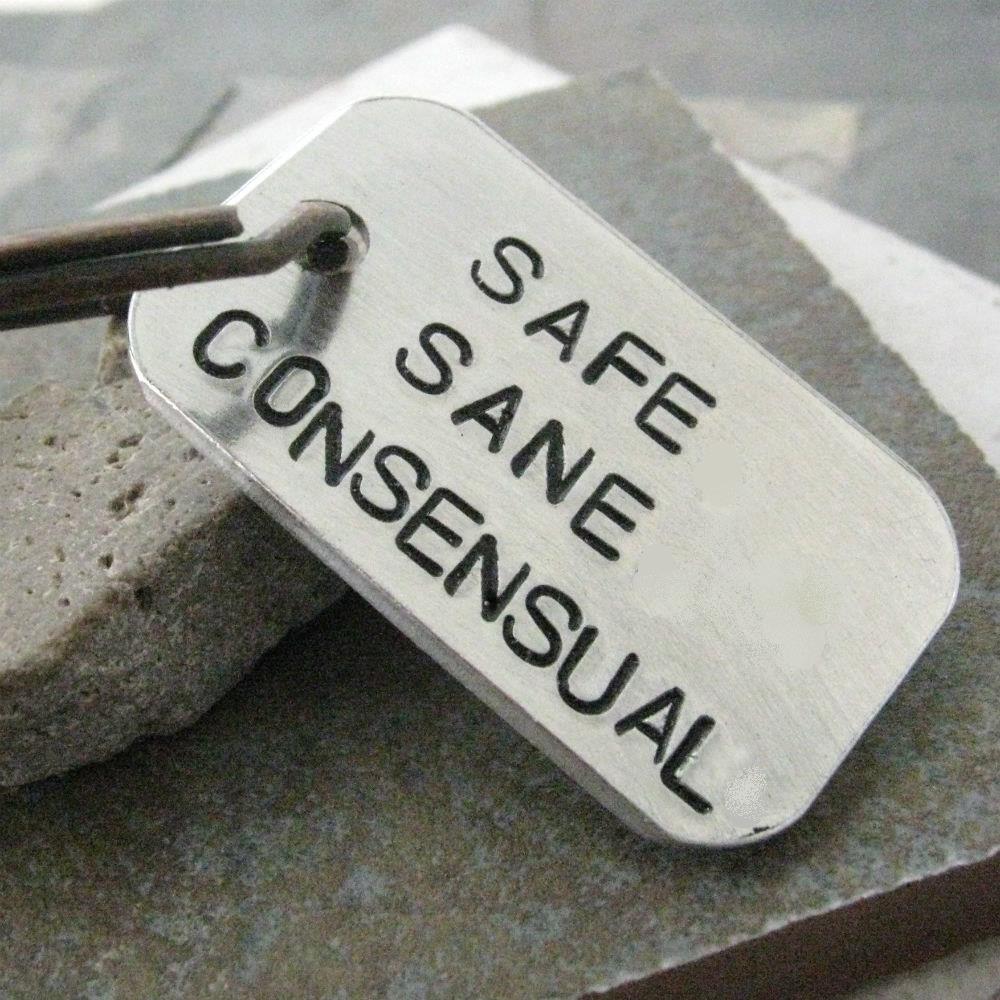
Wikipedia: BDSM
Handle It by Colton Ford
The Uncomfortable Language of Kink
Video Tips: Types of BDSM Play for
Beginners
DotGay Dictionary: What is Kink?
Tabook: Cute Bondage Cartoon
What We Can Learn About Ourselves From BDSM
Guide to Introducing Bondage Into Your Bedroom
Differences Between Kinks
and Fetishes
Sex Talk Realness: BDSM
YouTube Video: BDSM 101
Info: Cosplay/Furries
What is the Pup Play Queer Subculture?
BDSM Terms and
Definitions
Age Play - Usually referring to mommy/baby role play,
implying a nurturing relationship
Animal Play (Pet Play) - Acting like or dressing like an
animal (puppy, cat, pony)
Bondage - Acts involving the physical restraint of a
partner
Bottom - One who receives physical sensation from a top
in a scene... The one done-to rather than the doer
Brat - Submissive who loves to playfully push buttons
and ‘break’ rules to deliberately provoke attention from
their dominant
Collared - Submissive or slave who is owned in a loving
intimate relationship
Collaring - Formal acceptance by a dominant, of a
submissive's service, or the "ownership"
Consent - Mutual agreement to the terms of a scene or
ongoing BDSM relationship
Contract - Written agreement between the dominant and
submissive, outlining what structure, guidelines, rules
and boundaries to the relationship are agreed upon by
the participants


Wikipedia: BDSM
Sexplanations: Bondage 101
Kinky Terms Every Queer Man Needs To Know
BDSM Submissive: Yes, No, and Maybe List
Video Chat: Common BDSM Terms
Revealing My Kinks
How To Start Dom/Sub Relationships,
According To Experts
Photo Shoot: Leather Dads on Parade
Learning the Ropes in BDSM: Whips, Chains, Pleasure,
Pain
Aftercare: BDSM Practice We Should Use
For Vanilla Sex Too
Dom (Dominant)
- Person who exercises control... Contrast with
submissive
Domme - Woman who exercises control (Dominatrix)
Fetish - Specific obsession or delight in one object or
experience
Furry - Acting like or dressing like an animal
Handler -
The trainer or dominant person in a pup play scenario
Impact
Play - Any activity where sensation is created across
the body by flogging, spanking or slapping
Masochism
- Act of receiving pain for sensual/sexual pleasure
Masochist - Person who enjoys pain, usually sexually
Munch - Meeting or get-together of a group of BDSM
people, usually in a "vanilla" setting in
street-appropriate attire
OTK - Over the knee... Refers to spanking or paddling
Play Partner - BDSM participant in a scene
Rope Bunny - Woman who enjoys being bound with rope for
sexual pleasure
Spanking - Erotic spanking of another person for the
sexual arousal or gratification of either or both
parties
Sadism - Act of inflicting pain
Sadist - Person who enjoys inflicting pain, usually
sexually
Safeword - Codeword a bottom can use to force BDSM
activity to stop
Sensation
Play - Exploring different sensory limits, using
elements like hot wax, ice, or different textures,
sometimes combined with sensory deprivation (blindfolds,
earplugs)
Sub (Submissive) - Person that gives up control
Switch - Person who alternates between "top" and
"bottom" roles
Top - Person "doing the action"... Contrast
with bottom, person receiving the action
Top Drop - Exhaustion experienced by a Dom after a scene
or session
Vanilla - Someone who is not into BDSM... Sexual behavior which does not encompass BDSM
activity... Sometimes a derogatory term to refer to
"straight" people
Vincilagnia - Sexual arousal derived from bondage
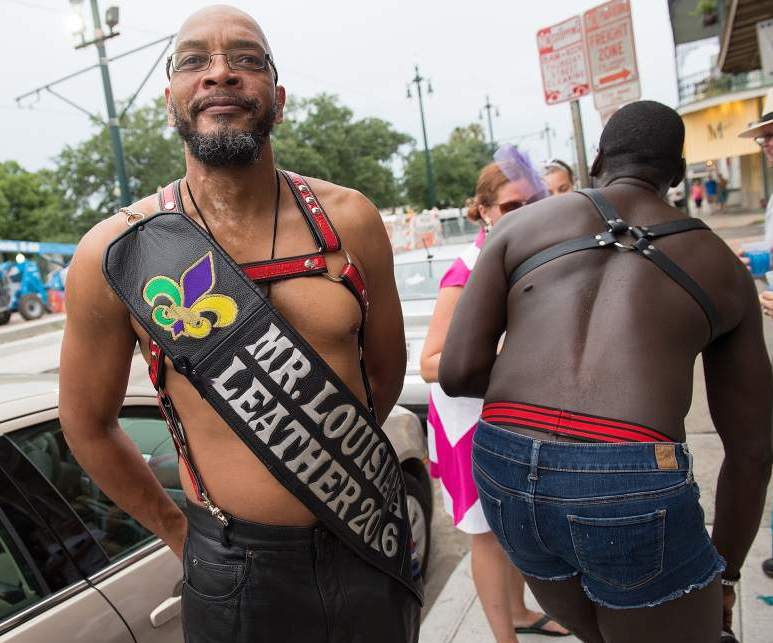

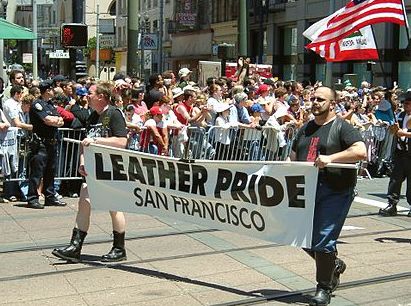
Lifestyle Education & Community
Jessica and Stevie: Guessing Kinky Terms
Handle It by Colton Ford
BDSM and Aftercare: How to Support the Tops and
Doms in Your Life
Family and Pride
in the BDSM Community
Alice Little: Flogging 101
BDSM: Part of Radical Queer History
What is BDSM?
Your Queer Guide to Kink,
Domination, Bondage, and More
Photo Shoot: Leather Dads on Parade
Types of
Rolepay Every Gay Couple
Needs to Try at Least
Once
Kinksters Who Found Their Kinks
Brat: Flirty, Feisty,
and Just Begging to be
Tamed
Kink Through the Ages
Info: Cosplay/Furries
BDSM Contract
Kink
does not have to include sex.
Kink does not have to include orgasms.
Kink does not have to include pain.
Kink does not have to include power play.
Kink does not have to include toys.
As long as there is explicit and enthusiastic consent,
you
decide how to express your kink.
-Lifestyle Education & Community
BDSM practitioners utilize a "contract"
to ensure their activity and interaction
is consensual, safe, and sane. It is a written agreement between the dominant and
submissive. It can be formal, and is usually composed
after much negotiation by the dominant and the
submissive, outlining what structure, guidelines, rules
and boundaries to the relationship are agreed upon by
the participants.

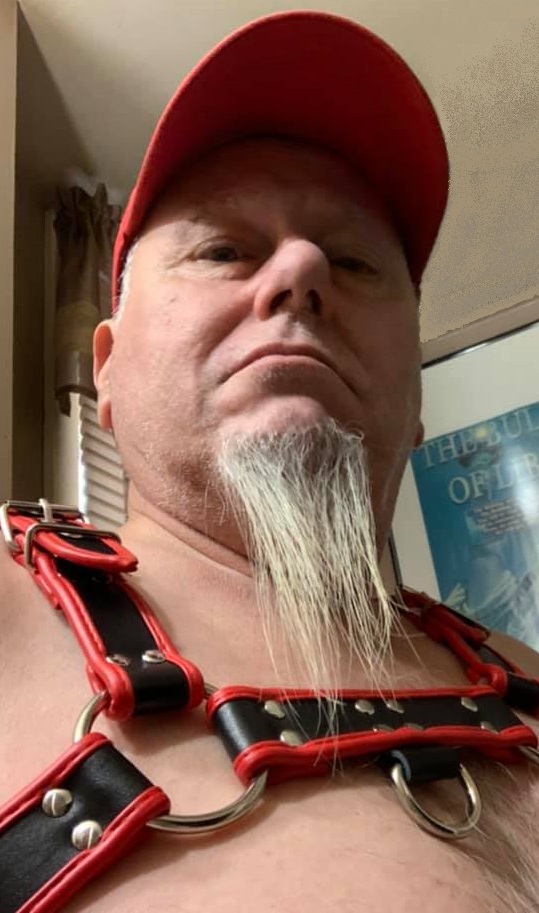


Fetish Festivals
Popular US Fetish Festivals
Folsom Street Fair | San Francisco
Mates Leather Weekend | Provincetown
Pig Week | Fort Lauderdale
International Mr. Leather | Chicago
Up Your Alley | San Francisco
Folsom Street East | New York City
Popular European Fetish Festivals
Darkland | Antwerp, Belgium
Folsom Europe | Berlin, Germany
European Rigger & Model Exchange |
Berlin, Germany
Fetish Week | London, England
Sleazy Madrid | Madrid, Spain
BDSM For Beginners: What You Need
To Know
The Uncomfortable Language of Kink
Kinky Bondage Toys
Kinky Terms Every Queer Man Needs To Know
Video Chat: Fetish and Kink
Tabook: Cute Bondage Cartoon
What We Can Learn About Ourselves From
BDSM
Guide to Introducing Bondage Into Your
Bedroom
Huffington Post: Kink and Consent
US News: What's Wrong with 50 Shades of
Grey?
Kink Through the Ages
Differences Between Kinks
and Fetishes
Huffington Post: BDSM Articles
Video Chat: Meaning and Types of BDSM
Collars
Advocate:
Photos of Kink and Leather on the
Streets of L

Folsom Street
Fair
The Folsom Street Fair (FSF) is an
annual BDSM and leather subculture
street fair held in September, that caps
"Leather Pride Week" in San Francisco.
The Folsom Street Fair (sometimes simply
referred to as "Folsom") takes place on
Folsom Street in San Francisco's South
of Market district. The event started in
1984 and is California's third-largest
single-day, outdoor spectator event and
the world's largest leather event and
showcase for BDSM products and culture.
It has grown as a non-profit charity and
local and national non-profits benefit
with all donations at the gates going to
charity groups as well as numerous
fundraising schemes within the festival
including games, beverage booths and
even spanking for donations to
capitalize on the adult-themed
exhibitionism.


Although sadomasochism has been
practiced for many centuries, the modern
gay leather scene in the United States
developed beginning in 1945 when
thousands of gay servicemen were given
blue discharges from service after World
War II and came to the major port cities
of the United States to live in gay
ghettos. Influenced by the 1953
film ‘The Wild One’ starring Marlon
Brando more butch gays began to imitate
him by wearing black leather jackets, a
black leather cap, black leather boots
and jeans and, if they could afford it,
by also riding motorcycles. In the 1950s
the magazine Bizarre familiarized people
with sexual fetishism.
City officials had wanted to
"revitalize" the historically blue
collar, warehouse, industrial district
known as South of Market (SOMA) by
continuing successful high rise
development already underway on Rincon
Hill. The leather community had been
active in resisting the city's ambitious
redevelopment program for the South of
Market area throughout the 1970s, but as
the AIDS epidemic unfolded in the 1980s,
the community's relative autonomy from
City Hall was dramatically weakened.
The crisis became an opportunity for the
city (in the name of public health) to
close bathhouses and regulate bars,
which they did beginning in 1984. As
these establishments for the leather
community were rapidly closing, a
coalition of housing activists and
community organizers decided to start a
street fair.



The fair would enhance the visibility of
the community, provide a means for
much-needed fundraising, and create
opportunities for members of the leather
community to connect to services and
vital information (e.g., regarding safer
sex) that bathhouses and bars might
otherwise have been situated to
distribute.
As one of the few occasions when
sadomasochistic activities are
encouraged and performed in public, it
attracts a considerable number of
sightseers and those who enjoy the
attention of onlookers as well as
hundreds of photographers and
videographers. Although the costumes and
activities are frequently transgressive,
many attendees find the event
"eye-opening" and positive. On the other
hand, the event has at times drawn
public and internal criticism for its
bawdy atmosphere and broad tolerance of
lewd behavior, and it is a regular
target for anti-LGBTQ groups.


The organizers have reportedly earned a
great amount of trust from city
officials as they have demonstrated not
only an exceptional level of community
and volunteer support, but also have
risen to be a role-model for other
street fairs in San Francisco which have
faced opposition from various
neighborhood groups.
With the assistance of the high-profile
Sisters of Perpetual Indulgence, the
gate donations run upwards of half a
million dollars. The fair annually draws
400,000 visitors, including kinky
leather fans from around the world, and
is the third-largest street event in
California, after the Tournament of
Roses Parade and San Francisco Pride
parade.
How Kinksters Found Their Kinks
We Can't Get Enough Leather Dads: Folsom
Europe Photos
Portland's Kink Fest
Sam Brinton on Biden's Staff: Non-Binary Pup Handler
Huffington Post: Kink and Consent
US News: What's Wrong with 50 Shades of
Grey?
Jessica and Stevie: Guessing Kinky Terms
BDSM: Part of Radical Queer History
Brat: Flirty, Feisty, and Just Begging to be Tamed
National Coalition
of Sexual Freedom
Types of Rolepay Every Gay Couple Needs
to Try at Least Once
Photo Shoot: Leather Dads on Parade
Kink Through the Ages
Society of Janus
The Society of Janus is a San Francisco,
California based BDSM education and
support group, and is the second oldest
BDSM organization in the United States.
It was founded in August 1974 by the
late Cynthia Slater and Larry Olsen.
The Society of Janus is nonprofit,
volunteer run and is devoted to the art
of safe, consensual and non-exploitative
adult power exchange. They publish a
bimonthly newsletter called Growing
Pains and a monthly schedule of BDSM
events called Rapid Release which
are mailed to members.
In 2014, the Society of Janus held their
40th Anniversary Dinner, Hall of Fame
Induction Ceremony & Play Party, which
was awarded "Best Organization
Anniversary Event" at The SF Leather
Community Awards for that year.
Society of
Janus
Leather Hall of Fame Inductee: Society
of Janus
Revolvy: Society of Janus

National Coalition of Sexual Freedom
The National Coalition for Sexual
Freedom (NCSF) is a sex-positive
advocacy and educational organization
founded in 1997 in the United States. It
claims to represent 50 coalition
partners and over 100 supporting
organizations. NSCF advocates on behalf
of adults involved in "alternative
lifestyles" with respect to sexuality
and relationship composition,
specifically for tolerance and
non-discrimination of those so
identified, as well as education for
adults involved in such lifestyles. The
organization's main office is in
Baltimore, Maryland, with members,
coalition partners, board, and
volunteers based across the United
States.
The NCSF's mission is: "The NCSF is
committed to creating a political, legal
and social environment in the US that
advances equal rights for consenting
adults who engage in alternative sexual
and relationship expressions. The NCSF
aims to advance the rights of, and
advocate for consenting adults in the
BDSM, Leather, Fetish, Swing, and
Polyamory communities. We pursue our
vision through direct services,
education, advocacy, and outreach, in
conjunction with our partners, to
directly benefit these communities."
National Coalition
of Sexual Freedom
NCSF Statement on Consent
NCSF Article: What Professionals Need to Know About BDSM


Kinky
Resources
VIDEO
Evie Lupine | BDSM, Sex, and
Alternative Lifestyles
Evie Lupine YouTube Channel
Madame Posh | BDSM and Kinky
Lifestyle Education
Madame Posh YouTube Channel
Morgan Thorne | BDSM Skills and
Tutorials
Morgan Thorne YouTube Channel
EDUCATION
National Coalition
of Sexual Freedom
Lifestyle Education &
Community
Society of
Janus

BOOKS
The Deep Psychology of BDSM and
Kink: Perspectives on the Soul’s
Transgressive Necessities |
Douglas Thomas (2024)
Fifty Shades of Grey | Book
Series by E.L. James (2011-12)
The Story of O | Book by Anne Desclos (1954)
Nine & Half Weeks | Book by
Elizabeth McNeill (1978)
Dezemberkind | Book by Leander Sukov (2004)
The Claiming of Sleeping Beauty
| Book Series by Anne Rice
(1983)
Gor Series | Gorian Novels by
John Norman (1966-13)
FILMS
Pillion | US Film, directed by
Harry Lighton, starrig Alexander
Skarsgård, Harry Melling
Fifty Shades of Grey | US Film
starring Dakota Johnson & Jamie Dornan
The Secretary | US Film starring
James Spader & Maggie Gyllenhaal
Nine & Half Weeks | US Film
starring Kim Basinger & Mickey
Rourke
Quills | US Film starring
Geoffrey Rush, Kate Winslett,
Joaquin Phoenix, Michael Caine
Preaching to the Perverted | British Film
The Piano Teacher | French Film
Wikipedia: BDSM
Sexplanations: Bondage 101
What We Can Learn About Ourselves From BDSM
Guide to Introducing Bondage Into Your Bedroom
BDSM Submissive: Yes, No, and Maybe List
How To Start Dom/Sub Relationships,
According To Experts
Video Chat: Common BDSM Terms
Handle It by Colton Ford
What is BDSM? Your Queer Guide to Kink,
Domination, Bondage, and More
Revealing My Kinks
Photo Shoot: Leather Dads on Parade
Kinksters Who Found Their Kinks

Bratting in the
Bedroom
Brat
- type of submissive who enjoys pushing boundaries in a
playful, teasing, or defiant way. Rather than simply
obeying commands, brats might talk back, playfully
resist, or “disobey” on purpose to elicit a reaction
from their dominant.
In 2024,
“brat summer” took over pop culture, especially when we
turned our favorite presidential candidate into some of
our favorite pop divas. However, there’s a lot more to
being a brat than listening to the most recent Charli
XCX album, and there are a lot of misconceptions about
what it means to be a brat in the bedroom.
Brats aren’t just mischievous troublemakers—they’re an
essential part of the BDSM and kink community. While
some submissives thrive on obedience, brats challenge
their dominant partners in playful and provocative ways,
adding an extra layer of tension, teasing, and mutual
enjoyment. But what exactly does it mean to be a brat in
the bedroom? And how can partners navigate brat dynamics
in a healthy and consensual way?
To break it down, we spoke with BDSM and relationship
experts, who explained what sets bratting apart from
other submissive roles, why it’s so appealing, and how
both brats and their dominant partners—often called brat
tamers—can create a safe and fulfilling dynamic.
A brat is a type of submissive who enjoys pushing
boundaries in a playful, teasing, or defiant way. Rather
than simply obeying commands, brats might talk back,
playfully resist, or “disobey” on purpose to elicit a
reaction from their dominant.
“In kink, a brat is typically a type of submissive who
gets pleasure from testing boundaries in playful, often
teasing ways,” Kira Hayes, a licensed independent
marriage and family therapist and clinical director at
Affirming Pathways Psychotherapy, explains. “Bratting
can be a way of inviting the dominant into a deeper
exchange of control, but done with humor, flirtation,
and mischief.”


Revealing My Kinks
Differences Between Kinks and Fetishes
BDSM and Better Mental Health
Types of Rolepay Every Gay Couple Needs
to Try at Least Once
Handle It by Colton Ford
Kink Through the Ages
Video Tips: Types of BDSM Play for Beginners
25 Facts About BDSM That You Won't Learn From 50 Shades
of Gray
Submissive: Yes, No, and Maybe List
Kinky Bondage Toys
Jessica and Stevie: Guessing Kinky Terms
Consensual Kink 101: Difference Between
BDSM and Abuse
Three Couples Try Bondage for the First Time
Bratting can take many forms, from lighthearted teasing
to physical resistance during a scene. But at its core,
it’s about creating a push-and-pull dynamic that makes
the power exchange feel more exciting and engaging.
While many submissives find satisfaction in following
orders and pleasing their dominant, brats get their
enjoyment from making their partner work for that
submission.
“Many, though not all, submissives get enjoyment,
pleasure, and satisfaction from following the orders and
requests of dominants and those bringing top energy to
spaces,” says Shanna K. Kattari, PhD, MEd, CSE,
associate professor at the University of Michigan.
“Conversely, for brats, they get that same feeling of
pleasure from being made to do whatever it is, rather
than from the obeying component.”
A brat’s playful defiance adds an extra layer of tension
and interaction to the dynamic, which can be thrilling
for both partners. “They often prefer more back and
forth between themselves and their dominant partner(s),
where they might mouth off or ‘sass back’ or even have
to be wrestled into submission,” Kattari explains.
“Their enjoyment often comes from the thrill of the
chase, and then eventually being caught and/or ‘forced’
(within pre-negotiated boundaries) into what their top
wants to do to them.”


Kink Through the Ages
Do's and Dont's of Kinky Sex
What We Can Learn About Ourselves From BDSM
Guide to Introducing Bondage Into Your Bedroom
Dominant Guide
Sexplanations: Bondage 101
What is BDSM? Your Queer Guide to Kink,
Domination, Bondage, and More
How To Start Dom/Sub Relationships,
According To Experts
Biggest Fetish Street Fair in Europe
Brat: Flirty, Feisty, and Just Begging to be Tamed
Kinksters Who Found Their Kinks
Alice Little: Flogging 101
BDSM: Part of Radical Queer History
Types of Rolepay Every Gay Couple Needs
to Try at Least Once
Why do people enjoy bratting?
For brats, the appeal often lies in the attention,
challenge, and playfulness of the dynamic.
“For the brat, it’s often about attention, connection,
and a playful test of the dominant’s control,” says
Hayes. “There can be a thrill in seeing how far they can
push and how the dominant will respond. It can also be
about trust, knowing they can act out and still be
wanted, loved, and contained.”
On the other side of the equation, brat tamers—dominants
who enjoy engaging with brats—find satisfaction in the
challenge. “For the dominant, taming a brat can be
incredibly satisfying,” Hayes explains. “It calls on
their confidence, creativity, and ability to stay
grounded in control. There’s often a sense of pride and
fulfillment in knowing they’ve ‘won’ the brat’s
submission in a way that’s dynamic and earned, not just
given freely.”
What are common brat behaviors?
Brats use a variety of tactics to provoke and challenge
their dominant partners, all in the name of playful
power exchange. Some common brat behaviors include:
Topping from the bottom: Brats might make cheeky
suggestions to their dominant, such as, “You could tie
me up and spank me with my favorite paddle, but only if
you’re feeling brave enough.”
Egging on
their dominant: A brat might push limits by saying
things like, “Really? I thought you could hit harder
than that,” or “Is that all you’ve got?”
Malicious compliance: Brats love finding loopholes in
instructions. As Kattari explains, this could look like,
“You told me to get ON the bed—you didn’t say which
direction I should lie down!” or “You said to choose
three toys to use on me. I have chosen three stuffed
animals. What? You didn’t say they had to be MEAN toys!”
Teasing
and distracting: Whether it’s dressing seductively while
their partner is on a work call or pushing limits
outside of scenes, brats enjoy keeping their dynamic
playful and unpredictable.


Wikipedia: BDSM
Sexplanations: Bondage 101
Kinky Terms Every Queer Man Needs To Know
BDSM Submissive: Yes, No, and Maybe List
Video Chat: Common BDSM Terms
Revealing My Kinks
How To Start Dom/Sub Relationships,
According To Experts
Photo Shoot: Leather Dads on Parade
Learning the Ropes in BDSM: Whips, Chains, Pleasure,
Pain
Aftercare: BDSM Practice We Should Use
For Vanilla Sex Too
What makes someone a good brat tamer?
Not all dominants enjoy bratting. For those who do,
patience and adaptability are key.
“Patience and a sense of humor are non-negotiable!” says
Hayes. “A good brat tamer doesn’t take the brat’s
behavior personally; they understand it’s an invitation
to engage. They stay steady, confident, and responsive,
never reactive.”
Kattari adds that brat tamers must also be strategic.
“They might enjoy the takedown of having to hold someone
and tie them up while they struggle, or the cerebral bit
of having to think through orders before they make them
to close any loopholes.”
How can partners ensure brat play stays consensual?
Since bratting involves testing boundaries, clear
communication and consent are essential.
“Partners should talk about what types of behavior are
on the table, what feels fun versus what crosses a line,
and how to check in during scenes,” Hayes advises.
“Having safe words (or signals) is essential, and brats
and tamers should have agreements on how to handle
things if one person needs to pause or stop.”
Aftercare is also crucial, as brat play can push
emotional edges. “Bratting can feel vulnerable on both
sides, so go slow, stay curious about each other, and
keep the focus on mutual enjoyment,” Hayes says.


Wikipedia: BDSM
Handle It by Colton Ford
The Uncomfortable Language of Kink
Video Tips: Types of BDSM Play for
Beginners
DotGay Dictionary: What is Kink?
Tabook: Cute Bondage Cartoon
What We Can Learn About Ourselves From BDSM
Guide to Introducing Bondage Into Your Bedroom
Differences Between Kinks
and Fetishes
Sex Talk Realness: BDSM
YouTube Video: BDSM 101
Info: Cosplay/Furries
What is the Pup Play Queer Subculture?
When does bratting become unhealthy?
There’s a difference between playful defiance and
outright disrespect. Healthy bratting is consensual,
lighthearted, and rooted in mutual enjoyment. When it
crosses into manipulation, lack of respect, or
boundary-pushing outside of agreed-upon scenes, it
becomes a problem.
“Harmful behavior usually shows up when boundaries
aren’t respected, when the brat’s behavior feels more
like emotional manipulation or disrespect outside of
scene dynamics, or when communication breaks down,” says
Hayes.
Kattari adds that not everyone enjoys bratting, and it’s
important to ensure all parties are comfortable. “For
some folks, brat taming can feel extra tiring, or it can
feel hurtful to have someone push back during play,”
they note. “If you try it and it doesn’t work for one or
more of the folks involved, that’s okay—not everything
works for everyone.”
Go forth… and brat
Bratting is about more than just being rebellious—it’s a
dynamic, engaging, and often deeply fulfilling form of
power exchange. When done with mutual respect, clear
communication, and consent, it can add excitement and
depth to BDSM dynamics.
“If you’re both/all on board, then talking about
where/when bratting might happen, what you both/all are
excited about, and setting clear expectations can really
help set you up for success,” Kattari says.
Whether you’re an experienced brat, a curious newbie, or
a dominant wondering if brat taming is for you, the key
is to approach it with openness, communication, and a
willingness to play. After all, in the world of brats, a
little bit of defiance can go a long way.
[Source: Andrew J. Stillman, Pride Magazine, March 2025]
Kinky Terms Every Queer Man Needs To Know
BDSM: Part of Radical Queer History
Photo Shoot: Leather Dads on Parade
BDSM and Aftercare: How to Support the Tops and
Doms in Your Life
The Uncomfortable Language of Kink
BDSM For Beginners: What You Need To Know
Kinky Bondage Toys
Video Chat: Fetish and Kink
What is the Pup Play Queer Subculture?
Consensual Kink 101: Difference Between
BDSM and Abuse
Tabook: Cute Bondage Cartoon
Huffington Post: Kink and Consent

Puppy Play
Pup Play (or Puppy Play) is when one
person takes on the role of a pup or
handler. The pup acts like their canine
counterpart and the trainer, for the
most part, handles the pup like he would
a biological puppy. For many it serves
as a release of the primal animal part
of them. Participants act like or dress
like puppies. Real animals are not
involved.
More specifically, "puppy play" is a
sexual practice where participants
role-play being puppies or handlers,
often within a dominance/submission
sexual context. It emerged out of (and
is still in large part related to) the
broader BDSM/leather community. More
specifically, puppy play is an activity
which takes place within the broad
category of dominant/submissive
interactions, the defining feature of
which is the relationship between one or
more “pups,” humans who take on the
persona and attributes of dogs for the
duration of the scene, and either a
“handler,” who remains human but takes
on the role of dog owner/dominant, or
with other “pups."
Pup/Puppy Play
Puppy Pride
Psychology of Puppy Play
Pup Play: Pushing for Self-Acceptance
Making Fetch Happen: Guide to Becoming a
Gay Pup



BDSM
Misconceptions
Myth: BDSM is mostly about the "dominant" partner
getting his/her way with a passive, exploited
"submissive"
Fact: BDSM community emphasizes the use of negotiation
and the creation of scripts. This view fails to
recognize that submissive individuals consent for
pleasure. It also fails to recognize the simple
metaphysics that 'fulfilling the masochists needs" is
central to finding and keeping the submissive partner.
Frequently one hears of Topping from the Bottom, where
the submissive partner manipulates the relationship,
while appearing passive, submissive and obedient.
Myth: BDSM is about physical pain
Fact: Kinky preferences are highly variable and not all
forms induce pain. Although pain can be involved, it is
in a sexual nature. Pain is experienced in the context
of love, trust, and arousal.
Myth: BDSM activities inevitably escalate to extremes
and/or become addictive
Fact: We see a "making up for lost time" phenomenon with
some individuals who are late in coming out. However,
this high level of activity usually levels off, though
this level may be "occasional" for some and "24/7" for
others.
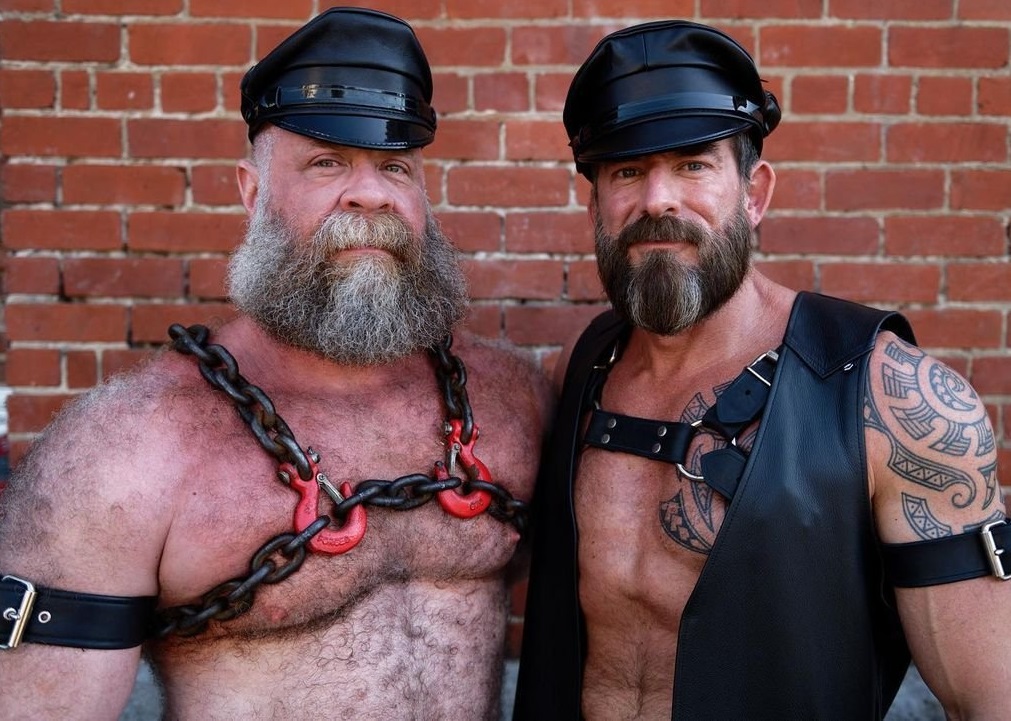
Learning the Ropes in BDSM: Whips, Chains, Pleasure,
Pain
Differences Between Kinks and Fetishes
Jessica and Stevie: Guessing Kinky Terms
DotGay Dictionary: What is Kink?
Brat: Flirty, Feisty, and Just Begging to be
Tamed
Lifestyle Education & Community
Kink Through the Ages
Types of Rolepay Every Gay Couple
Needs to Try at Least Once
Family and Pride
in the BDSM Community
Alice Little: Flogging 101
Myth: BDSM is self-destructive
Fact: This is simply inaccurate and not supported by any
evidence. Self-destructive behaviours are experienced no
more frequently by BDSM practitioners than the general
public. On that note, anything pleasurable is subject to
abuse and BDSM is no exception.
Myth: BDSM stems from childhood abuse
Fact: There is no evidence for this claim, and it has
been disproven by various research.
Myth: BDSM is an avoidance of intimacy
Fact: BDSM is no more or less prone to intimacy
amplification or aversion than more standard sexual
practices.
Myth: BDSM is separate from "vanilla" sex
Fact: For most practitioners, BDSM activities and
"regular" intercourse are often combined or intertwined
in one way or another.
US News: What's Wrong with 50 Shades of
Grey?
Aftercare: BDSM Practice
We Should Use For Vanilla Sex Too
Info: Cosplay/Furries
Huffington Post: BDSM Articles
Video Chat: Meaning and Types of BDSM
Collars
Advocate:
Photos of Kink and Leather on the
Streets of LA

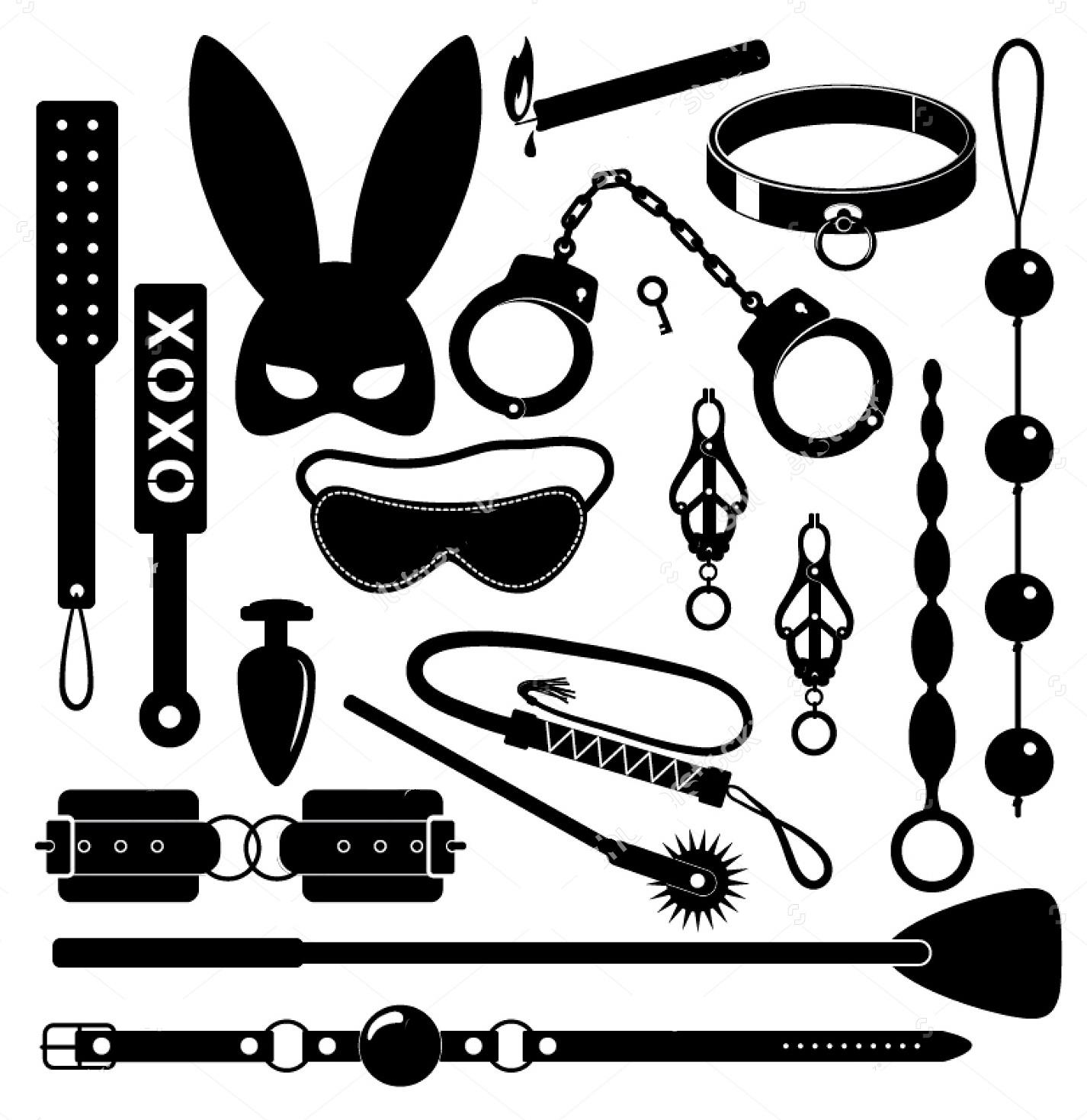

Books on the
Subject
Domination & Submission: The BDSM Relationship
Handbook by Michael Makai
Different Loving: The World of Sexual Dominance
& Submission by Gloria Brame, John Jacobs,
William Brame
S&M 101 by Jay Wiseman
Master's Manual: Handbook of Erotic Dominance by
Jack Rinella
Erotic Slavehood by Christina Abernathy
Come Hither: Common Sense Guide to Kinky Sex by
Gloria Brame
Diary of a Submissive by Sophie Morgan
When Someone You Love is Kinky by Dossie Easton
Defense of Masochism by Anita Phillips
Radical Ecstasy by Dossie Easton
SM 101:
Realistic
Introduction
by Jay
Wiseman
What
Professionals
Need to
Know
About
BDSM
Video
Chat:
Meaning
and
Types of
BDSM
Collars
Kinksters
Who
Found
Their
Kinks
Ultimate
Guide to
Kink:
BDSM,
Role
Play,
Erotic
Edge by
Tristan
Taormino
50
Shades
of Kink:
Introduction
to BDSM
by
Tristan
Taormino
Video
Tips:
Types of
BDSM
Play for
Beginners
How To
Start
Dom/Sub
Relationships,
According
To
Experts
Sadomasochism:
Powerful
Pleasures
by Peggy
Kleinplatz
&
Charles
Moser
Video
Advice:
BDSM
Play and
Safety
Tips
Kinky
Terms
Every
Queer
Man
Needs To
Know
Playing
Well
With
Others:
Field
Guide to
Kink,
Leather
& BDSM
Communities
by
Harrington
&
Williams
SM 101:
Realistic
Introduction
by Jay
Wiseman
What
Professionals
Need to
Know
About
BDSM



Leather
Subculture
Leatherman
Fetish
The
leather subculture denotes practices and styles of dress
organized around sexual activities that involve leather
garments, such as leather jackets, vests, boots, chaps,
harnesses, or other items. Wearing leather garments is
one way that participants in this culture
self-consciously distinguish themselves from mainstream
sexual cultures. Leather culture is most visible in gay
communities and most often associated with gay men
(enthusiasts are nicknamed "leathermen"), but it is also
reflected in various ways in the gay, lesbian, bisexual,
and straight worlds. Many people associate leather
culture with BDSM (Bondage/Discipline,
Dominance/Submission, Sado/Masochism, also called "SM"
or "S&M") practices and its many subcultures. But for
others, wearing black leather clothing is an erotic
fashion that expresses heightened masculinity or the
appropriation of sexual power; love of motorcycles,
motorcycle clubs and independence; and/or engagement in
sexual kink or leather fetishism.


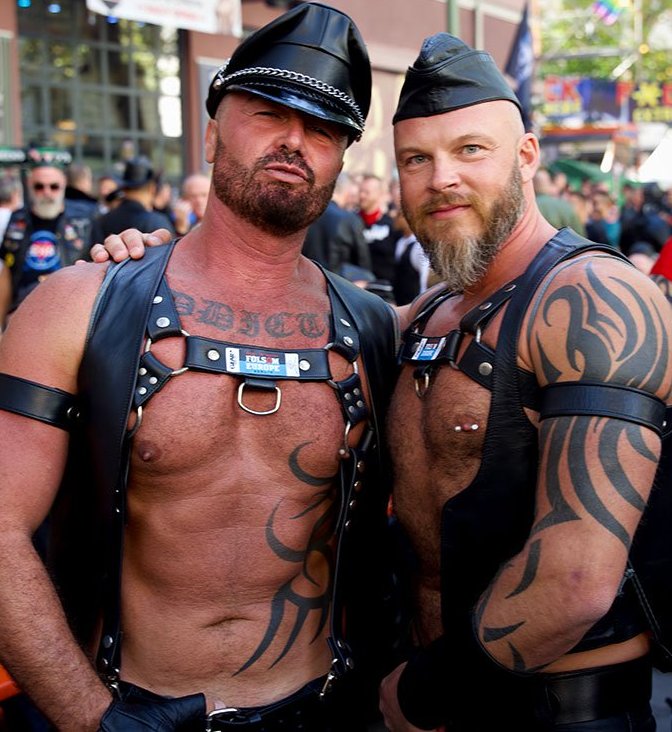

Video
Chat:
Meaning
and
Types of
BDSM
Collars
Ultimate
Guide to
Kink:
BDSM,
Role
Play,
Erotic
Edge by
Tristan
Taormino
50
Shades
of Kink:
Introduction
to BDSM
by
Tristan
Taormino
Video
Tips:
Types of
BDSM
Play for
Beginners
Sadomasochism:
Powerful
Pleasures
by Peggy
Kleinplatz
&
Charles
Moser
Video
Advice:
BDSM
Play and
Safety
Tips
Playing
Well
With
Others:
Field
Guide to
Kink,
Leather
& BDSM
Communities
by
Harrington
&
Williams
Differences Between Kinks and Fetishes
Info: Cosplay/Furries
Gay male leather culture has existed since the late
1940s, when it likely grew out of post-WWII biker
culture. Early gay leather bars were subcultural
versions of the motorcycle club with pioneering gay
motorcycle clubs including the Satyrs, established in
Los Angeles in 1954. Oedipus, also established in Los
Angeles in 1958, and the New York Motorbike Club. Early
San Francisco clubs included the Warlocks and the
California Motor Club, while early clubs in Sydney
included the South Pacific Motor Club. Leather Clubs for
gay men started in Amsterdam and Berlin in the 1950s,
and in Sydney from 1970.
In 1964 an article on Life magazine with a significant
amount of prejudice, drew attention to the gay leather
community. The "Tool Box" bar in San Francisco was the
target of the prejudice, although not specified, it was
heavily speculated. The fourteen page article titled,
"Homosexuality in America" also brought leather
subculture to the attention of isolated and closeted
gays.
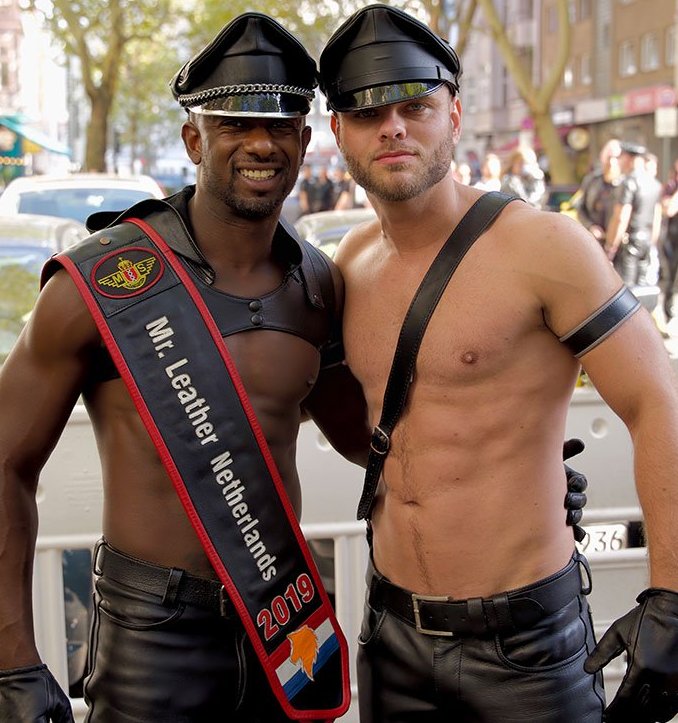



These gay clubs, like the clubs of straight motorcycle
culture in general, reflected a disaffection with the
mainstream culture of post-World War II America, a
disaffection whose notoriety — and therefore appeal —
expanded after the sensationalized news coverage of the
Hollister "riot" of 1947. The 1953 film The Wild One
starring Marlon Brando wearing jeans, a T-shirt, a
leather jacket, and Muir cap, played on pop-cultural
fascination with the Hollister "riot" and promoted an
image of masculine independence that resonated with some
gay men who were dissatisfied with a culture that
stereotyped gay men as effeminate. To that end, gay
motorcycle culture also reflected some men's
disaffection with the coexistent gay cultures more
organized around high culture, popular culture
(especially musical theater), and/or camp style. Perhaps
as a result, the leather community that emerged from the
motorcycle clubs also became the practical and symbolic
location for gay men's open exploration of kink and S&M.
Wikipedia: Leather Subculture
Differences Between Kinks and Fetishes
BDSM
Wiki: Leather Culture
Photo Shoot: Leather Dads on Parade
Wikipedia: Sexual Fetishism
Biggest Fetish Street Fair in Europe
Rubber
Subculture
Rubber and
latex fetish
Queer
communities have a long history of subcultures. From
bears, to otters, to butches, there are a variety of
ways in which community members have created spaces to
feel more like themselves. These subcultures are just
another way in which queer folks can feel better
represented and seen.
The rubber community is a subculture that involves
wearing or fetishizing latex clothing. Wearing latex
signals their association and pride with their
unconventional approach to sex. Rubber subculture is
often related to BDSM practices and interest in sexual
activities that involve wearing latex apparel. The queer
community has close ties to the BDSM community and we
often see them intermingle. This is why a lot of rubber
community members are also a part of the LGBTQ
community.


The boom of the latex fetish began in the 1960s and
early 1970s. The British TV program The Avengers is
often seen as the catalyst for the movement. PVC boots,
catsuits, and raincoats were just a few of the kinds of
garments that began the rubber subculture.
In 1972 a magazine called AtomAge was founded. It
featured BDSM imagery and helped popularize and solidify
these subcultures mainly within younger groups of
people. In addition, latex became closely related to
popular rock bands such as the Sex Pistols who were also
huge influencers at the time. The rubber fetish was
becoming more and more socially acceptable and popular.
In the 1980s the rubber subculture took a turn and made
its way into nightlife culture. Club kids and performers
started wearing latex outfits and became pioneers of the
rubber subculture. This also brought the rubber
community and BDSM community closer. At this time the
idea of wearing latex became more related to sexual
practices and fetishization.
What makes someone a part of the rubber community?
The one thing all rubber community members have in
common is a love of latex itself. Other than that the
way one approaches being rubber is completely up to
them. Some rubber community members like to wear
skin-tight latex outfits such as a catsuit often
associated with the dominatrix community. Others might
turn to gas masks or galoshes, it all depends on your
preference.
The rubber subculture refers to those who feel sexual
gratification from feeling, seeing, or even tasting
latex. A lot of community members describe wearing latex
as a “second skin” which is why it is appealing to some.
It may feel like you are naked when you are wearing
latex even though you are not, which is a turn-on for
some latex wearers.
In addition, sex toys such as dildos or butt plugs are
often made from rubber which may be another reason why
it’s a material people often associate with sex. The
sensory experience of touching latex is a big reason why
rubber can be considered sexual.
Truly the main thing that makes someone rubber is being
an active community member. The rubber subculture can be
seen represented at pride weeks and in safe spaces. In
recent years, it has been very important to understand
how sex can be more than just conventional.
It’s also always a great idea to trust that members of
the community know more about their identity than you
do. Listen to rubber community members when they speak
about their identity and don’t doubt or assume anything.



Perspectives on being rubber
Being a part of the rubber community should be a source
of pride. Being able to be a part of these subcultures
can mean a variety of things including finding yourself
and where you stand in terms of your sexuality and
identity. It is important to remember that communities
such as the rubber community face a great deal of
oppression and unwarranted hate.
There are a variety of myths and misconceptions
regarding the rubber community that we are working on
debunking. Because the rubber subculture is closely
related to the BDSM community and explores a very
sex-positive part of oneself this leads to unnecessarily
negative connotations. The idea that rubbers are “all
about sex” or that the community is “abusive” are lies
and myths. Consensual sex is the only kind of sex
accepted within these communities, non-consensual acts
are NOT condoned in any shape or form. Sex positivity
changes the cultural attitude we have that sex is
“taboo” when in fact it is just another way we express
ourselves.
It is also important to note the intersectionality
between the rubber community and the LGBTQ community,
Although the rubber community is accepting of everyone
we should always acknowledge those who pioneered the
movement and who at first were marginalized and
oppressed for expressing themselves. It is because of
these brave individuals that we can have things such as
rubber pride week.
A great way to better understand the rubber perspective
is to keep up to date with rubber news and follow
individuals who are advocating for rights and policies
that benefit the community. Reading about what it means
to be rubber and be a part of this vast community is a
great way to better understand the rubber viewpoint.
[Source: By Eloisa De Farias, Into Magazine]



Exhibitionism
Getting
Naked in Public
Interested in showing yourself sexually to others?
Let’s talk about this often misunderstood kink
What is exhibitionism? Exhibitionism is a kink where you
get turned on by, feel sexual pleasure and have a big
desire to show yourself naked to others, often while
doing something sexual. Being in public is often a part
of the kink! People who are into exhibitionism often get
turned on by it for the attention and the thrill, but
also because they like to turn someone else on, or
because they like to be humiliated.
Consent is very important... It’s very
important not to confuse exhibitionism with flashing,
where you show yourself naked to people who don’t want
to look. That’s something that’s illegal and a
destructive sexual behavior that you need to seek help
for.
With that said, everyone needs to give their consent
before having exhibitionism! This includes setting
boundaries where everyone talks about what they feel
comfortable with and are into doing. You should decide
on a safe word so that any participant, both the one
showing themself, and the ones looking, can stop
whenever they feel like.
How to get started... Most beginners to
exhibitionism start off in a very private situation,
often in front of only their partner, and when that
feels safe and you eventually want more, then it’s
common to explore exhibitionism at kink parties or
online in different communities. And after the session,
it’s important to have shared aftercare and be there for
each other both physically and emotionally!



Sexual ways to explore exhibitionism
--Have a private show for your partner where you give a
strip tease, just show up yourself in underwear and/or
masturbate.
--Have sex in front of others, either IRL or via cam.
--While not per se exhibitionism, going public with your
partner and having sex where you’re close to getting
caught, but don’t get it, can feel very thrilling if you
are into showing yourself. It can, for example, be to
get intimate in a fitting room or at a public toilet
where people understand what you’re doing, but never see
anything!
--Send nudes to your partner or someone else you’re
comfortable with and who’s giving you their consent.
--Find a club, sauna, bath house or beach where nudity
is okay. Some of these places allow it in a sexual way,
while others simply are for nudists in a non-sexual
context, and both can be satisfying for someone
interested in exhibitionism. Just remember to respect
the rules of the place you’re at! So for example
masturbating at a nude beach is in most cases not okay!
--If being solo, it can feel satisfying to masturbate in
front of a mirror, to record yourself, or find someone
online who wants to watch!
--Also solo, take a nature walk in the nude.
Non sexual ways:
Even though exhibitionism is mainly associated with sex
and nudity, you can also explore it in other non-sexual
ways, such as by:
--Dancing for others, often in public
--Wearing see-through or in other ways revealing clothes
--Letting people take photos of you
[Source:
Sophie Roos, Diva Magazine, Oct 2025 - Sophie Roos
is a licensed sexologist, relationship therapist, and
author at Passionerad Swedish sex and relationship
magazine]
Video
Chat:
Meaning
and
Types of
BDSM
Collars
Ultimate
Guide to
Kink:
BDSM,
Role
Play,
Erotic
Edge by
Tristan
Taormino
50
Shades
of Kink:
Introduction
to BDSM
by
Tristan
Taormino
Video
Tips:
Types of
BDSM
Play for
Beginners
Sadomasochism:
Powerful
Pleasures
by Peggy
Kleinplatz
&
Charles
Moser
Video
Advice:
BDSM
Play and
Safety
Tips
Playing
Well
With
Others:
Field
Guide to
Kink,
Leather
& BDSM
Communities
by
Harrington
&
Williams
Brat:
Flirty,
Feisty,
and Just
Begging
to be
Tamed
Differences Between Kinks and Fetishes
Info: Cosplay/Furries
Fetish
Information
Definitions
Sexual fetishism or erotic fetishism is a sexual focus
on a nonliving object or nongenital body part. The
object of interest is called the fetish. The person who
has a fetish for that object is a fetishist. A sexual
fetish may be regarded as a non-pathological aid to
sexual excitement, or as a mental disorder if it causes
significant psychosocial distress for the person or has
detrimental effects on important areas of their life.
Sexual arousal from a particular body part can be
further classified as partialism.



While medical definitions restrict the term sexual
fetishism to objects or body parts, fetish can also
refer to sexual interest in specific activities in
common discourse.
In common parlance, the word fetish is used to refer to
any sexually arousing stimuli, not all of which meet the
medical criteria for fetishism. This broader usage of
fetish covers parts or features of the body (including
obesity and body modifications), objects, situations and
activities (such as smoking or BDSM). Paraphilias such
as urophilia, necrophilia and coprophilia have been
described as fetishes.
Originally, most medical sources defined fetishism as a
sexual interest in non-living objects, body parts or
secretions. The publication of the DSM-III in 1980
changed that by excluding arousal from body parts in its
diagnostic criteria for fetishism. In 1987, a revised
edition of the DSM-III (DSM-III-R) introduced a new
diagnosis for body part arousal, called partialism. The
DSM-IV retained this distinction. Martin Kafka argued
that partialism should be merged into fetishism because
of overlap between the two conditions, and the DSM-5
subsequently did so in 2013. The ICD-10 definition is
still limited to non-living objects.
Types of Fetishisms
In a review of 48 cases of clinical fetishism, fetishes
included clothing (58.3%), rubber and rubber items
(22.9%), footwear (14.6%), body parts (14.6%), leather
(10.4%), and soft materials or fabrics (6.3%). A 2007
study counted members of Internet discussion groups with
the word "fetish" in their name. Of the groups about
body parts or features, 47% belonged to groups about
feet (foot fetishism), 9% about body fluids, 9% about
body size, 7% about hair (hair fetish), and 5% about
muscles (muscle worship). Less popular groups focused on
navels (navel fetishism), legs, body hair, mouth, and
nails, among other things. Of the groups about objects,
33% belonged to groups about clothes worn on the legs or
buttocks (such as stockings or skirts), 32% about
footwear (shoe fetishism), 12% about underwear
(underwear fetishism), and 9% about whole-body wear such
as jackets. Less popular object groups focused on
headwear, stethoscopes, wristwear, and diapers (diaper
fetishism).




Diagnosis
The ICD-10 defines fetishism as a reliance on non-living
objects for sexual arousal and satisfaction. It is only
considered a disorder when fetishistic activities are
the foremost source of sexual satisfaction, and become
so compelling or unacceptable as to cause distress or
interfere with normal sexual intercourse. The ICD's
research guidelines require that the preference persists
for at least six months, and is markedly distressing or
acted on.
Under the DSM-5, fetishism is sexual arousal from
nonliving objects or specific nongenital body parts,
excluding clothes used for cross-dressing (as that falls
under transvestic disorder) and sex toys that are
designed for genital stimulation. In order to be
diagnosed as fetishistic disorder, the arousal must
persist for at least six months and cause significant
psychosocial distress or impairment in important areas
of their life. In the DSM-IV, sexual interest in body
parts was distinguished from fetishism under the name
partialism (diagnosed as Paraphilia NOS), but it was
merged with fetishistic disorder for the DSM-5.
The ReviseF65 project has campaigned for the ICD
diagnosis to be abolished completely to avoid
stigmatizing fetishists. Sexologist Odd Reiersøl argues
that distress associated with fetishism is often caused
by shame, and that being subject to diagnosis only
exacerbates that. He suggests that, in cases where the
individual fails to control harmful behavior, they
instead be diagnosed with a personality or impulse
control disorder.

Treatment
According to the World Health Organization, fetishistic
fantasies are common and should only be treated as a
disorder when they impair normal functioning or cause
distress. Goals of treatment can include elimination of
criminal activity, reduction in reliance on the fetish
for sexual satisfaction, improving relationship skills,
or attempting to remove deviant arousal altogether. The
evidence for treatment efficacy is limited and largely
based on case studies, and no research on treatment for
female fetishists exists.
Cognitive behavioral therapy is one popular approach.
Cognitive behavioral therapists teach clients to
identify and avoid antecedents to fetishistic behavior,
and substitute non-fetishistic fantasies for ones
involving the fetish. Aversion therapy can reduce
fetishistic arousal in the short term, but is unlikely
to have any permanent effect.
Antiandrogens and selective serotonin reuptake
inhibitors (SSRIs) may be prescribed to lower sex drive.
Cyproterone acetate is the most commonly used
antiandrogen, except in the United States, where it may
not be available. A large body of literature has shown
that it reduces general sexual fantasies. Side effects
may include osteoporosis, liver dysfunction, and
feminization. Case studies have found that the
antiandrogen medroxyprogesterone acetate is successful
in reducing sexual interest, but can have side effects
including osteoporosis, diabetes, deep vein thrombosis,
feminization, and weight gain. Some hospitals use
leuprolide acetate and goserelin acetate to reduce
libido, and while there is presently little evidence for
their efficacy, they have fewer side effects than other
antiandrogens. A number of studies support the use of
SSRIs, which may be preferable over antiandrogens
because of their relatively benign side effects. None of
these drugs cure sexual fetishism, but they can make it
easier to manage.
Relationship counselors may attempt to reduce dependence
on the fetish and improve partner communication using
techniques like sensate focusing. Partners may agree to
incorporate the fetish into their activities in a
controlled, time-limited manner, or set aside only
certain days to practice the fetishism. If the fetishist
cannot sustain an erection without the fetish object,
the therapist might recommend orgasmic reconditioning or
covert sensitization to increase arousal to normal
stimuli (although the evidence base for these techniques
is weak).
Other
Alternative Lifestyles
Drag|Cross Dressing
Bear Community
Furries|Cosplay
Ballroom Culture
Polyamory
Skirt Club
Down Low
Nudity|Nudism

HOME
QUEER CAFE
│ LGBTQ Information Network │ Established 2017
|